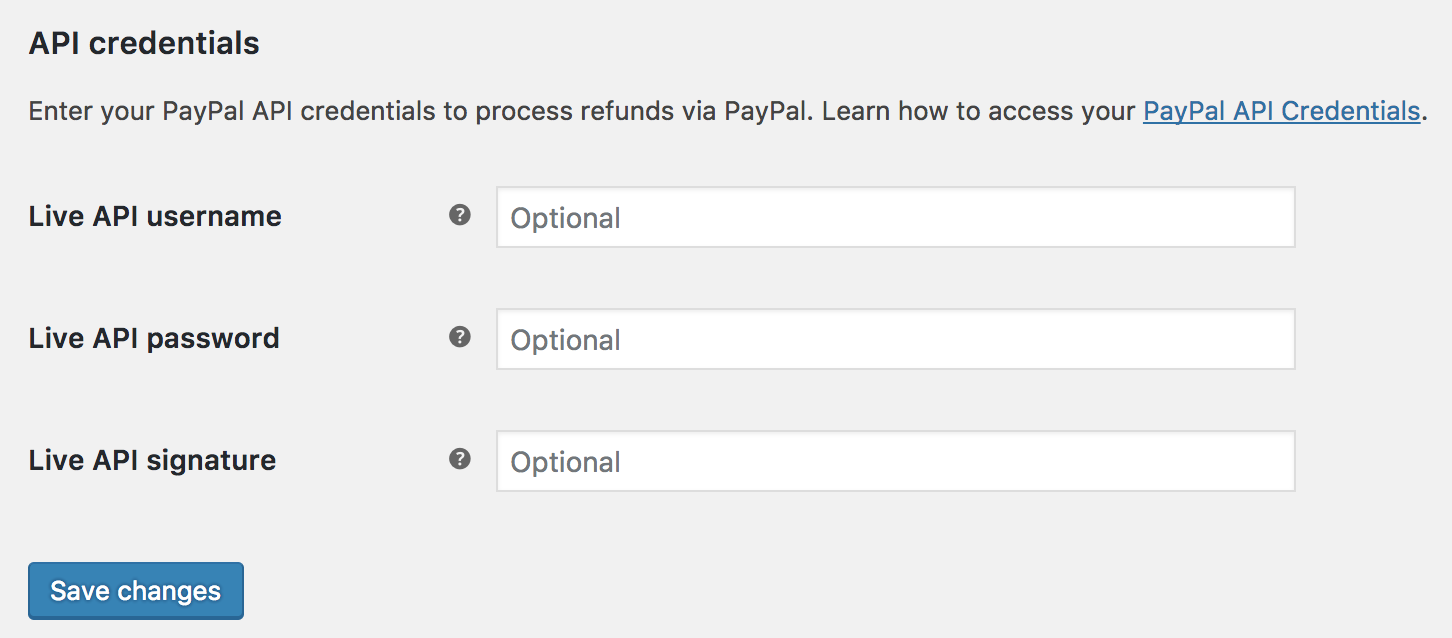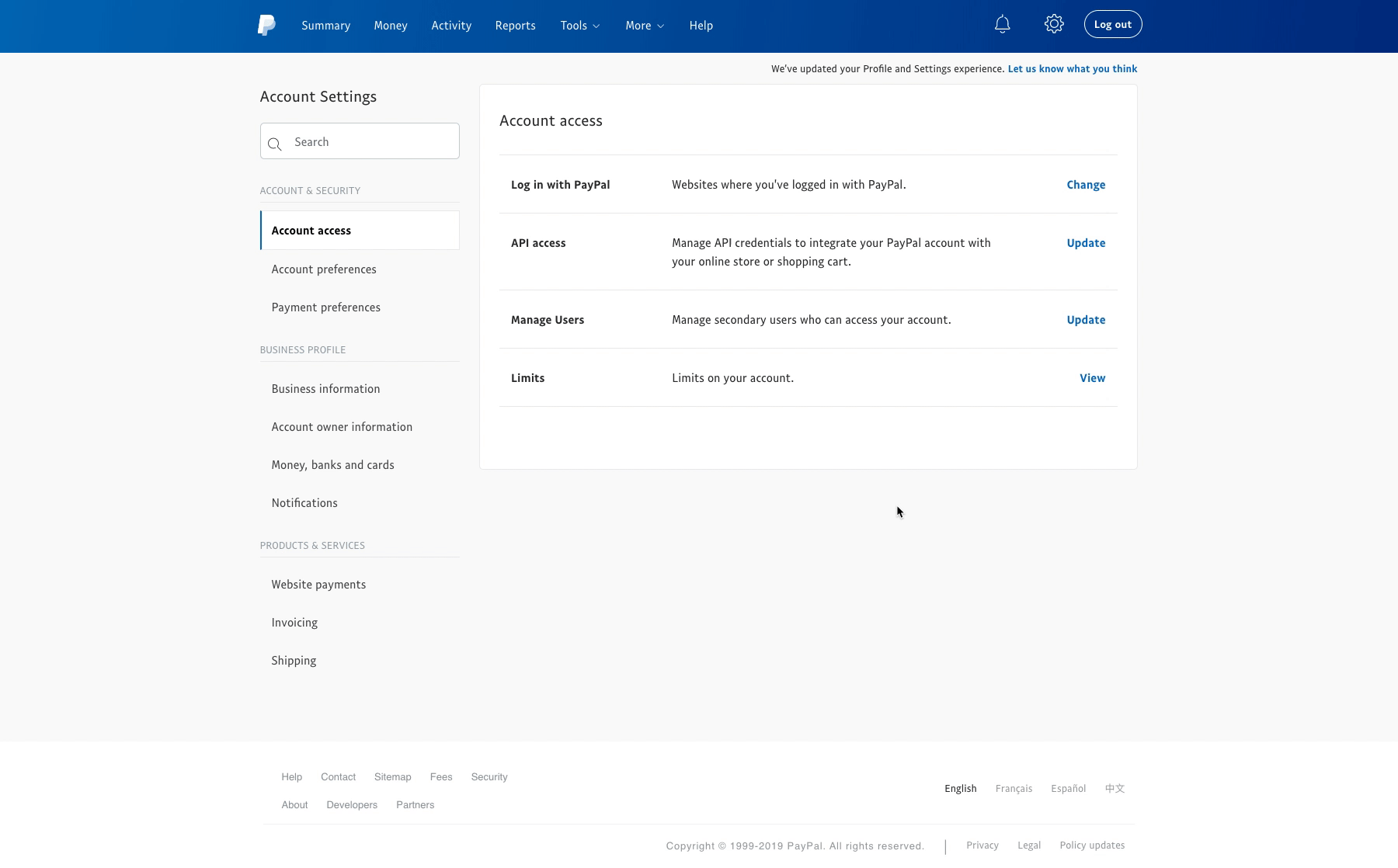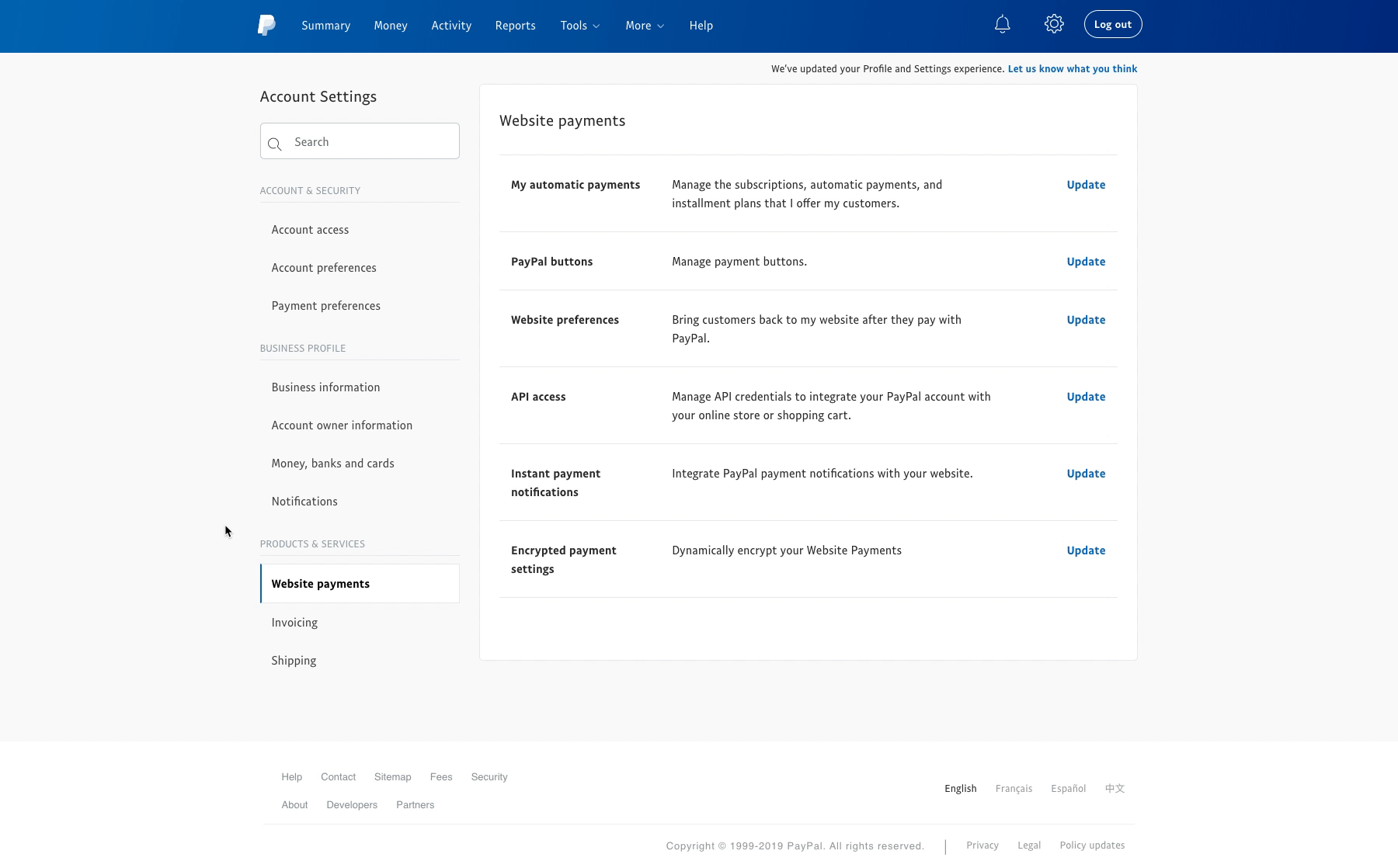Paypal Standard - User Guide
Woocommerce supports standard Paypal out of the box.
If you would like to activate and start taking Paypal payments, please follow this guide.
Configure
To set up PayPal Standard:
1, Go to: WooCommerce > Settings > Payments > Paypal.
2. Use the toggle under Enabled to select PayPal.
3. Select Set up. You are taken to the PayPal Standard settings.

4. Enter your email address in the PayPal Email field, which is the most important thing to configure before taking payments. Must match the same email address on your PayPal Business account.
Advanced Options

Under Advanced Options, complete fields as needed.
5. Tick the box for Enable PayPal Sandbox if you wish to test the checkout process during your store’s development. With sandbox enabled, no payment/money is taken. To use Sandbox mode, you need a separate sandbox account via PayPal Sandbox.
6. Debug log may also be turned on, which can be useful during development. Please raise a ticket if you wish to use these logs
7. Tick the box for Enable IPN Email Notifications (optional). Instant Payment Notifications (IPN) are sent from PayPal when you receive a payment, issue a refund, or a chargeback or cancellation.
8. The Receiver email in that field needs to be the Primary email address listed in the PayPal.com setting page – https://www.paypal.com/businessprofile/settings
9. PayPal Identity Token (optional). Only required if you signed up for the Data Transfer option on your PayPal account; can be used to verify payments if you have IPN issues.
10. Enter an Invoice Prefix (useful if you have multiple stores). WC is default to denote WooCommerce transactions.
11. There are two shipping options:
- Send shipping details to PayPal. You can opt to have WooCommerce send shipping details to PayPal to create shipping labels instead of billing.
- Address override option. PayPal verifies addresses therefore this setting can cause errors. We recommend keeping it disabled, but it can be useful in preventing address information from being changed.

Note: When selecting the option to send Shipping details, PayPal verifies passed addresses and can reject the customer if they don’t fully recognize the address. If “Shipping Details” checkbox is not checked – PayPal Seller protection might not be valid, since PayPal requires buyer’s Shipping Address for Seller Protection
.
12. Payment Action lets you choose to Capture funds immediately or only Authorize*.
*Once an ‘authorize only’ order has been changed to Processing or Completed, funds are automatically captured as long as you have entered your PayPal API Credentials (as below) under WooCommerce > Settings > Payments > PayPal.
13. Page Style (optional) allows you to select the name of a custom page from your PayPal account.
14. Image URL (optional) gives the option to specify a 150×50 image to display on PayPal checkout pages.
API Credentials

There are three fields to paste API information into:
- API Username
- API Password
- API Signature
How to get Live API Information
- Log in to your PayPal account at PayPal.com.
- Go to Settings (Gear Icon) > Account Settings > API Access.
- Select NVP/SOAP API integration (Classic) > Manage API Credentials > Request API Signature.
- View and copy API Username, API Password, and API Signature.

Configuring the PayPal dashboard
Most of the configuration is handled from WooCommerce, but there are a few items to set up at PayPal.
PayPal IPN URL
It’s necessary for WooCommerce to set up your PayPal IPN URL.
PayPal Instant Payment Notifications (PayPal IPN) tells your store that payment has been successful (or not).
How to set up PayPal IPN
- Log in to your PayPal account at PayPal.com.
- Go to Settings (Gear Icon) > Account Settings > Notifications > Instant Payment Notifications (Update).
- Click the Choose IPN Settings button, then use this URL, replacing example.com with your own URL:
- Make sure the Receive IPN messages option is selected, then save.

Multiple IPN URLs
It is possible to have multiple stores using the same PayPal.com account and IPN. There’s one default Notification URL, but if you send an IPN listener URL with the transaction, it overrides the default. As long as each transaction is passed to PayPal.com with the notify_url parameter set as the second URL then this will work.
Auto-Return
You can set up auto-return in your PayPal account, which will take customers to a receipt page.
How to setup Auto-Return
- Log in to your PayPal account at PayPal.com.
- Go to Settings (Gear Icon) > Account Settings > Website payments > Website preferences.
- In the Auto return section, select On, then use this URL, replacing example.com with your own URL:
Regardless of this setting, it redirects dynamically to the correct receipt page.
- Optional: Add ?utm_nooverride=1 to the end of your URL to ensure that transactions (i.e., conversions) are credited to the original traffic source, rather than PayPal.

Related Articles
Paypal - User Guide
Account Setup and Onboarding Testing in Sandbox PayPal transactions can be tested in the PayPal Sandbox before accepting live payments on your site. See the PayPal sandbox testing guide for more details. Note: All transactions conducted in the ...Paypal Standard - Troubleshooting Guide
PayPal API credentials notice PayPal does not provide a way to verify your API Credentials when they are first entered into WooCommerce. Instead, if a request to suspend or cancel a subscription fails due to invalid credentials, it will keep a record ...Groups WooCommerce - User Guide
Setup To sell memberships with WooCommerce requires the following extensions besides WooCommerce itself: Groups – Groups is free and designed as an efficient, powerful and flexible solution for group-oriented memberships and content access control. ...Basic Woocommerce - User Guide
For pricing and how to add to your website see at the bottom of the page. Adding and Managing Products Adding a product Before adding your first product, let’s get familiar with how product categories, tags, and attributes work. Product Categories ...Basic Wordpress - User Guide
Permalinks Overview Permalink is short for “permanent link.” Permalinks are permanent URL structures used to help organise the content of your website (pages, posts, products, etc.) so it can be efficiently navigated, shared, and referenced by users ...

